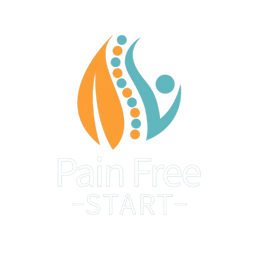Introduction
Osteoporosis is a common yet often silent condition that weakens bones, making them more prone to fractures. It affects millions of people, particularly postmenopausal women and older adults. Despite its prevalence, many people remain unaware of their risk until a fracture occurs. In this blog, we’ll explore what osteoporosis is, its risk factors, and how you can take proactive steps to strengthen your bones and reduce your chances of fractures.
What is Osteoporosis?
Osteoporosis, derived from the Greek words “osteo” (bone) and “porosis” (porous), is a condition that reduces bone density and strength. This leads to fragile bones that are more susceptible to fractures, even from minor falls or everyday movements. While osteoporosis can affect both men and women, postmenopausal women face the highest risk due to hormonal changes that accelerate bone loss.
Osteoporosis in the UK – How Common Is It?
Osteoporosis is a widespread health issue in the UK:
3 million people in the UK are estimated to have osteoporosis.
Osteoporosis-related fractures lead to over 300,000 hospital admissions each year.
Hip fractures alone cost the NHS billions annually in treatment and rehabilitation.
These statistics highlight the importance of awareness, early detection, and prevention to reduce the impact of osteoporosis on individuals and the healthcare system.
Who Is at Risk? Key Factors That Affect Bone Health
Several factors contribute to the likelihood of developing osteoporosis. Understanding these risk factors can help you take preventive action:
Age & Gender – Bone density naturally declines with age, with women (especially postmenopausal women) at higher risk due to a drop in estrogen levels.
Family History – If a parent or close relative has osteoporosis or has suffered fractures, your risk increases.
Lifestyle Choices – A sedentary lifestyle, smoking, excessive alcohol intake, and poor nutrition all weaken bones over time.
Calcium & Vitamin D Deficiency – These nutrients are essential for bone health. A lack of them can accelerate bone loss.
If you’re concerned about your risk, speak to your GP about bone density testing to assess your bone health.
How Does Osteoporosis Affect Daily Life?
Osteoporosis doesn’t just increase the risk of fractures—it can significantly impact mobility, independence, and overall quality of life. Some key consequences include:
Fractures: Common in the spine, hip, and wrist, fractures can be debilitating and slow to heal.
Chronic Pain: Osteoporosis can lead to persistent back pain, especially if spinal fractures occur.
Loss of Independence: Severe osteoporosis-related fractures can result in long-term disability and reduced mobility.
By taking steps to prevent osteoporosis early, you can maintain strong bones and reduce the risk of fractures as you age.

Struggling with PAIN or INJURY? I would LOVE to HELP. Click here to learn how I can support you.
Preventing & Managing Osteoporosis
The good news is that osteoporosis can often be prevented or managed effectively through simple lifestyle changes.
1. Exercise for Stronger Bones
Weight-bearing exercises help to strengthen bones and improve balance, reducing the risk of falls.
Best exercises for bone health:
– Walking & hiking
– Strength training
– Dancing or low-impact aerobics
TOP TIP – If you’re looking for a structured approach to improving your strength, balance, and posture, my Pain Free Body Program is designed to help you build a stronger, more resilient body.
Read more: 5 Essential Tips for Walking with Osteoporosis
How Walking Helps Prevent and Manage Osteoporosis
2. Nutrition for Bone Health
Eating a nutrient-rich diet is crucial for maintaining bone strength. Focus on:
Calcium-rich foods – Dairy products, leafy greens, almonds, and fortified foods.
Vitamin D – Essential for calcium absorption; get it from sunlight exposure or supplements.
Protein – Supports bone repair and strength; include lean meats, fish, and plant-based proteins.
3. Lifestyle Changes That Make a Difference
Making small changes to your daily habits can help protect your bones:
Quit Smoking – Smoking reduces calcium absorption and weakens bones.
Limit Alcohol Intake – Excessive alcohol consumption increases fracture risk.
Maintain a Healthy Weight – Being underweight or overweight can affect bone density.
4. Bone Density Testing & Medical Support
For those at higher risk, a bone density scan (DXA scan) can assess bone strength and help determine if treatment is needed. In some cases, medication may be prescribed to slow bone loss and improve bone density.
If you are concerned about your bone health, consult your GP for advice on the best course of action.
Support & Resources in the UK
There are excellent resources available for those looking for osteoporosis support, including:
Royal Osteoporosis Society (ROS) – Provides information, support, and advocacy for osteoporosis patients.
NHS Osteoporosis Services – Your GP can refer you for bone density testing and treatment options.
Online Support & Exercise Programs – My Pain Free BODY Program is designed to help you strengthen your body, improve balance, and stay active safely.

FREE Posture Program – UPGRADE your body TODAY. Click here to learn more and enrol.
Conclusion
Osteoporosis is a major health concern, but with the right knowledge and proactive steps, you can protect your bones and reduce the risk of fractures. By focusing on regular exercise, proper nutrition, and healthy lifestyle choices, you can maintain strong, healthy bones for life.
If you think you may be at risk of osteoporosis, speak to your GP or healthcare provider for further assessment.
Take care, Helen
Helen Manders BSc (Hons) MCSP HCPC
Chartered Physiotherapist Since 2001
Struggling with PAIN or INJURY? I would LOVE to HELP. Click here to learn how I can support you.



